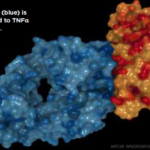SAN DIEGO—The U.S. Food & Drug Administration (FDA) approved an array of therapies with new and expanded indications in rheumatology this past year, an FDA official said in a session at ACR Convergence 2023.
“We have had another busy year at the FDA,” said Eric Gapud, MD, PhD, medical officer with the FDA’s Division of Rheumatology and Transplant Medicine. “We have approved new indications and new routes of administration for previously approved drugs and expanded indications to include new pediatric populations.”
In the session, Update & Safety Issues on Recently Approved Agents for Rheumatic Disease, Dr. Gapud described new approaches to approval for intravenous (IV) secukinumab for psoriatic arthritis (PsA) and other conditions, and a pediatric PsA indication for subcutaneous abatacept and etanercept.
Those expanded indications came in a year that also included approval of canakinumab, an interleukin (IL) 1 inhibitor, for gout flares and sarilumab, an IL-6 inhibitor, for polymyalgia rheumatica (PMR). Other approvals included colchicine to reduce the cardiovascular risk for patients with atherosclerotic cardiovascular risk disease and a slate of new biosimilars.
New Approach for Secukinumab Dose Determination
For IV secukinumab for PsA, ankylosing spondylitis (AS) and non-radiographic axial spondyloarthropathy (nr-axSpA), the FDA reviewers allowed a new approach, called Model Informed Drug Development (MIDD), in which pharmacokinetic modeling was used to estimate the intravenous dosing regimen that would approximate the exposures already established as safe and effective with subcutaneous dosing.
They settled on a specific exposure of intravenous dosing that corresponded to the established 150 mg and 300 mg subcutaneous dose. The FDA was satisfied that it was a therapeutically appropriate dose that would be effective, Dr. Gapud said.
For safety, FDA reviewers were able to leverage safety data with the approved 150 and 300 mg of subcutaneous dosing because the exposure with the selected IV dose is within the approved subcutaneous range of exposure.
This approach was considered appropriate for secukinumab, Dr. Gapud said, because of the drug’s linear pharmacokinetics, meaning its rate of clearance stays constant rather than changing with the dose. In addition, the IV formulation to be marketed uses the same four-week interval as the approved subcutaneous regimen and clinical experience and pharmacokinetic data are available.
“It is important to note that this approach was considered applicable in this unique case based on the totality of data available from the extensive secukinumab development program and may not be generalizable to other subcutaneous-to-IV conversion programs,” Dr. Gapud said.
Approving Pediatric Indications
FDA regulators used another outside-the-box approach when approving subcutaneous abatacept and etanercept for pediatric PsA populations: pharmacokinetic matching and efficacy extrapolated using the adult population.
“The extrapolation was based on the assumption that the course of the disease and the expected response to the drug product are sufficiently similar in pediatric and adult populations,” Dr. Gapud said.
For these expanded indications, the FDA relied on safety data that showed these therapies to be safe in relevant pediatric populations, including patients with polyarticular juvenile idiopathic arthritis (pJIA) and, for etanercept, pediatric plaque psoriasis.
Asked later whether this approach may be used for other indications as well, Dr. Gapud said it was possible.
“Pharmacokinetic extrapolation is for efficacy—and only for efficacy. The safety data [are] leveraged; in these particular cases, it was specifically from the relevant indication”—pJIA and psoriasis, with data for a similar age group of patients, he said.
Expanding Biosimilars
This year also included new approvals of a biosimilar to tocilizumab and an interchangeable biosimilar to ustekinumab, which may be substituted at the pharmacy without the intervention of the prescribing healthcare provider. These were the first biosimilars approved for these reference products. There was also an approval of biosimilars to adalimumab, with an interchangeable, bringing the total number of approved adalimumab biosimilars to nine.
“The approvals of these biosimilar and interchangeable products,” Dr. Gapud said, “further the FDA’s longstanding commitment to support a competitive marketplace for biologic products and, ultimately, empower patients by helping improve access to safe, effective and high-quality medications at potentially lower costs.”
Label Updates for Rheumatology Therapies
Anil Rajpal, MD, MPH, clinical team leader in the same division at the FDA, reviewed several labeling changes for therapies used in rheumatology. For hydroxychloroquine, these changes included hepatotoxicity in patients with porphyria cutanea tarda (PCT) and an update to neuropsychiatric reactions. The tacrolimus label was updated to include drug-drug interactions with cannabidiol. The label for secukinumab added eczematous eruptions, and the belimumab label was updated to note increased adverse events when used concomitantly with other biologics.
The changes to the hydroxychloroquine label for neuropsychiatric reactions, Dr. Rajpal said, shows the value of long-term vigilance and participation of the healthcare community in drug safety monitoring.
The FDA had received multiple reports of neuropsychiatric reactions previously. In July, it changed the drug’s warning and precautions to note the onset of neuropsychiatric symptoms within the first month after starting treatment, that reactions were reported in patients both with and without a history of neuropsychiatric disorders and that symptoms could take several weeks to abate due to the drug’s long half-life. The FDA also updated the list of adverse reactions to include depression, hallucinations, anxiety, confusion and sleep disorders.
“It’s important that healthcare providers continue submitting reports of adverse reactions even for drugs like this that were approved many years ago,” Dr. Rajpal said. “We continue to monitor the safety of even these older drugs.”
Thomas Collins is a freelance medical writer based in Florida.



